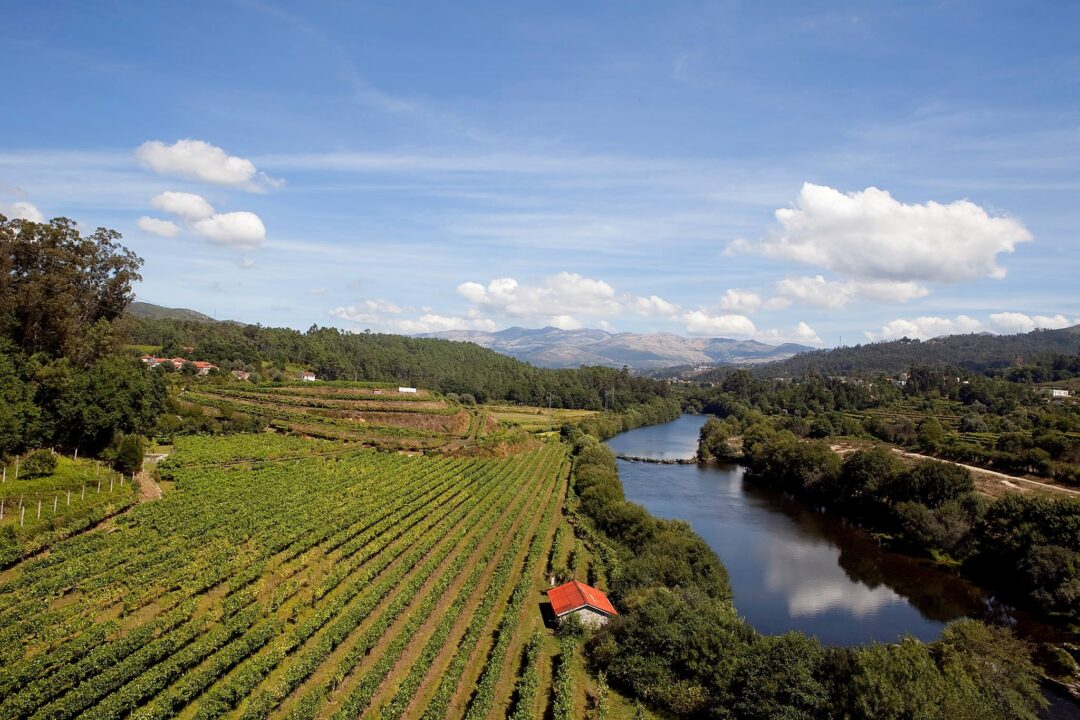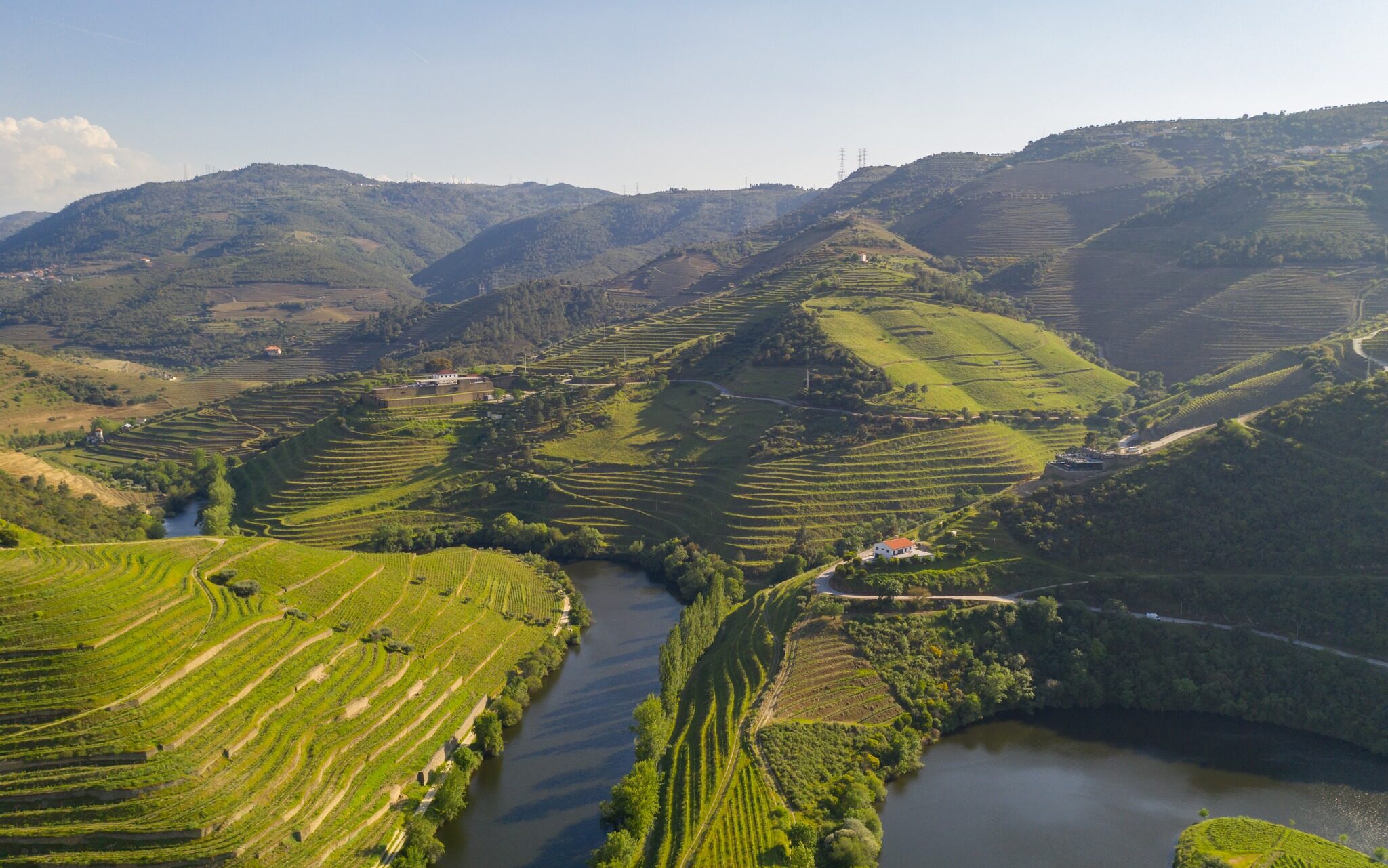The dining room at Marcus, in Montréal’s Four Seasons Hotel, gleams with marble and brass. Light streams through floor-to-ceiling windows, catching on polished glassware and the curve of plush banquettes. There’s a soft hum from the open kitchen.
In a corner nook of cosy banquettes, Raphaël Bérêche stands as he speaks, a glass in hand, posture relaxed yet assured. His tone is both poetic and practical, shaped by years of experience. The conversation flows easily; technical at times but with such obvious underlying passion and conviction that it is captivating all the same . He talks about time as if it were an ingredient, and about how every step, from vineyard to cellar, serves the pursuit of a clearly defined goal.
A Family Estate Rooted in Time and Place
Bérêche & Fils was founded in 1847 in Ludes, a Premier Cru village perched on the northern slope of the Montagne de Reims. Today, fifth-generation brothers Raphaël and Vincent Bérêche carry the legacy forward. Vincent oversees the vineyards, while Raphaël manages the cellar. Together, they’ve built a reputation as one of Champagne’s most thoughtful grower-producers; a benchmark for precision and patience.
The family’s holdings of organic and biodynamically farmed vineyards stretch across 11.5 hectares. They are spread out across Champagne’s major sub-regions, each contributing a distinct voice to the Bérêche & Fils palette. On the Montagne de Reims, the heartland around Ludes (Premier Cru) provides the core: chalk-clay slopes, old-vine Chardonnay and Pinot Noir, and parcels like Les Beaux Regards and Le Cran that reflect the ridge’s mineral tension. In the Petite Montagne de Reims (village of Ormes) the grapes root in sandy-chalk soils and bring freshness and finesse — for example the single-parcel Campania Remensis.
The Vallée de la Marne adds depth and fruit, especially through the Meunier vines in Mareuil-le-Port and Le Port-à-Binson (for the “Rive Gauche” cuvée) planted on clay-chalk with moderate sun exposure. Beyond the core, Bérêche has also acquired plots in flagship Grand Cru villages: Côte des Blancs (Cramant, for pure Chardonnay), and other Grand Cru sites in the Montagne (Aÿ, Ambonnay, Mailly) where chalky, steep slopes give Pinot-dominated wines added structure and complexity.
In 2025, new plots in Verzenay among others joined the estate, a reflection of their long-term commitment to diversity and terroir precision. “Every new parcel brings a new perspective,” Raphaël said with a smile. “But the foundation remains Ludes. That’s where our identity begins.” Ludes’ vineyards, facing north and northeast, with chalk-clay soils, provide a long slow, growing season resulting in wines with low pH, remarkable tension, and fine, complex aromatics.

From Vineyard to Cellar
In the cellar, a fine balance of precision and restraint governs every detail. Fermentations are spontaneous, relying exclusively on ambient yeasts, and proceed slowly — often six weeks or more. “This is far longer than customary,” Raphaël affirms, going on to explain how this unhurried evolution preserves the inheritant character of each terroir.
Base wines rest on their lees until May, gaining texture, breadth, and depth. All wines are vinified and aged in oak barrels that the family seasons themselves. Rather than acquiring used barrels from quality producers in other regions, the barrels are purchased new. They are first filled with second-press taille wine, which is later sold off. In this way, Raphaël explains, the barrels are “informed with the taste of Champagne” from the outset. Only after this initial, first fill to imprint the barrels, does Raphaël use them to produce the estate’s own cuvées.
The wines undergo no forced malolactic conversion. Low pH levels and cool cellar temperatures act as a natural inhibitor. “If it happens, it happens,” he said with a shrug. “But it is rare and we just don’t need it.”
Once bottled, the different cuvée ages two to eight years sur lattes, sealed under natural cork instead of the typical crown cap. The cork allows minuscule oxygen exchange, yielding texture and aromatic depth — avoiding the reduction that can occur under airtight seals. To ensure purity, Bérêche sources individually tested Amorim corks, screened for TCA using gas chromatography. Even disgorgement is done in-house, with the family’s own bac à glace machine, allowing them full control from start to finish.
This meticulous process isn’t about perfectionism for its own sake. It’s about continuity — about honouring the natural rhythm of each parcel and the quiet dialogue between soil, grape and time.
The Wines in the Glass
Each cuvée felt distinct, yet connected by a common thread: purity, depth, and a sense of vibrancy and energy that defines Bérêche’s style.

Champagne Bérêche “Rive Gauche” 2020, Extra Brut – 94 pts. LW
100% Pinot Meunier from 50-year-old vines in Le Port-à-Binson (Vallée de la Marne) on clay-chalk soils.
Pale gold with a hint of amber. Aromas of quince, ginger, digestive biscuit, and subtle cedar spice lead to a broad, saline palate framed by fine mousse and subtle noble bitters. Gastronomic in style, this slow-growing Meunier balances fruit and structure with remarkable poise.
Champagne Bérêche “Campania Remensis” Rosé 2021, Extra Brut – 95 pts. LW
Blend of Pinot Noir and Chardonnay from Ormes (Petite Montagne de Reims), south-facing slopes known as Les Montées. Pale salmon hue. Lifted floral aromas underscored by orange zest, raspberry, and bergamot lead into a creamy, precise palate. Clean, pure, and finely structured with zesty citrus drive and refreshing bitters.
Champagne Bérêche “Les Beaux Regards” 2020, Extra Brut – 96 pts. LW
100% Chardonnay from old vines in Ludes 1er Cru, from parcels Les Beaux Regards (planted 1902) and Les Clos (1970). Delicate aromas of linden flower, lemongrass, and raw honey, give way to lively saline notes on the palate. Elegant, savoury, spiced, and subtly powerful with very fine bubbles.
Champagne Bérêche “Brut Réserve” (2022 base), Extra Brut – 93 pts. LW
Blend of Chardonnay, Pinot Noir, and Pinot Meunier from the Montagne de Reims, Petite Montagne, and Vallée de la Marne, with 40% reserve wines.
Broad and savoury yet finely balanced. A creamy mid-palate gives way to vibrant acidity and chalky tension — a clear expression of the house style: articulate, vinous, precise.
Champagne Bérêche “Cramant Grand Cru” 2019, Extra Brut – 98 pts. LW
100% Chardonnay from Grand Cru vineyards in Cramant (Côte des Blancs).
Seductive aromas of roasted hazelnut, lemon peel, and apricot pit. The palate is racy and concentrated, its lace-like texture stretching into a seemingly endless, savoury mineral finish. Profound, and hugely elegant.
Champagne Bérêche “Aÿ Grand Cru” 2016, Extra Brut – 97 pts. JB
75% Pinot Noir, 25% Chardonnay from the “Brise Pot” and “Froide Terre” parcels in Aÿ.
Pale gold with amber highlights. Aromas of almond croissant and quince paste open to a broad, creamy, layered palate. Intriguing hints of umami balance the generous, voluptious character. Opulent yet refined.
Champagne Bérêche “Le Cran” 2017, 1er Cru Extra Brut – 95 pts. LW
Blend of Chardonnay and Pinot Noir from mid-slope vines in Ludes 1er Cru, prized for their mineral intensity.
Pleasantly oxidative in a nutty, savoury spiced style with lashings of ginger biscuit. The palate is textural and saline, combining texture and clarity in equal measure — a contemplative, food-worthy Champagne.
Final Thoughts
Lunch with Raphaël Bérêche was a reminder that true craftsmanship often speaks softly. His Champagnes are not built to impress through volume or flash, but through precision, patience, and an unwavering commitment to authenticity. Each glass seemed to echo his own character: thoughtful, grounded, and quietly confident.
Where to Buy in Québec: SAQ / Agent: Vin Dame Jeanne
















